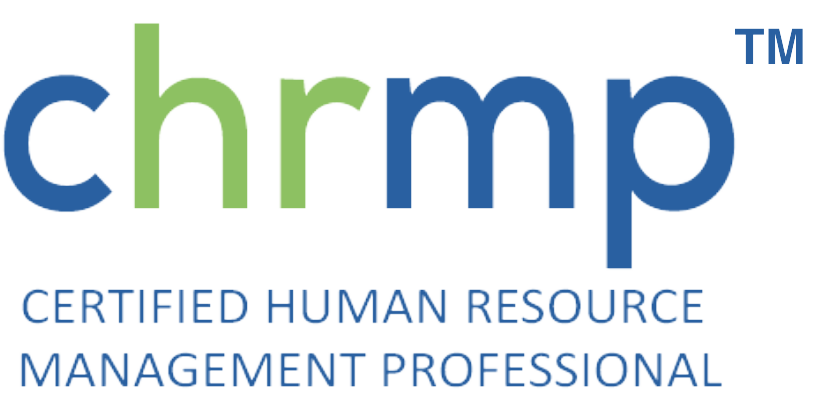Effective technical writing” is very significant aspect in modern day world, as it helps the researcher to disseminate knowledge. Also, it may help in taking decision.
This is also important in the field of HR. This is because they deal with such documents for multi-faceted aspects related to their organization.
Definition | Characteristics of Effective Technical Writing
Let us first understand what do we mean by technical writing.
Wikipedia defines the technical writing as a writing or drafting technical communication used in technical and occupational fields. These fields may be computer hardware and software, engineering, chemistry, aeronautics, robotics, metallurgy, and biotechnology. Wikipedia includes finance, medical, consumer electronics and forestry also in this category.
In modern day, technical writing encompasses all documents of complex technical processes. These may be
- Reports
- Executive summary
- Briefs
- Brochures
- Research papers
We should remember that any information conveyed in any way in technical field is technical writing. A technical writer may also write technical documents like the following –
- Manuals
- Medical Studies
- Feasibility Studies
- Technical Reports
- Technical Plans
- Thesis
Difference between technical and creative writing
Before we elucidate the characteristics of effective technical writing, let us understand how technical writing is different from other forms of writing like creative writing, business writing and or fiction writing.
Technical writing is done in a scientific style. It is characterized by simple statement of truths, which don’t change with time. However, creative writing may not be based on truth.
We should bear it in mind that scientific writing of different researchers are much more similar in style than the poems written by different poets. However, technical authors may have individuality as well as their writing habits.
Another difference between technical and creative writing is that the former is used to convey a set of information, related to a specific technical field.
We do it in a formal manner based on technical facts. Creative novels or poems or stories may be based on imagination and emotions of the writer. These may not be necessarily true.
There is no place of emotions in technical writing. Creative writing is mainly for entertaining. When we read novels or stories, we simply enjoy them.
On the other hand, technical writing is done with a view to convey information, so that an action is initiated by the reader. They may get a new direction in their on-going research work, also by this.
Commercially, they may decide to purchase the new idea or product, based on technical writing.
A technical writer would be someone who writes documentation for software applications. They usually work closely with developers, product managers, and other business users. They may also write articles about technology topics for websites.
Further, technical writing is always objective, while the creative writing is subjective.
The writing process for technical manuals should include the importance of effective technical writing.
Technical writing plays an important role in ensuring that the team members communicate effectively. It helps them to write clear and concise documents which are useful for both internal and external readers. In the modern business environment, the success of any project depends largely upon how effectively the team communicates. Therefore, it becomes essential to make sure that the team members write effective technical documents.
Technical writers play a vital role in helping teams meet deadlines and deliver high-quality products.
A technical manual should be written in such a way that it is easy to understand, yet detailed enough to help users solve any issues they may encounter. When writing a manual, it is important to keep in mind that users don’t always know what they need to do, so you must write instructions that are specific and clear.
What questions should be asked before writing effective technical report
Are you preparing a written presentation in the form of a report / paper or brochure. In that case, you should ask 3 questions to yourself, as given below. A clear cut, answer to these questions will determine how the technical report will be written.
- Why am I going to write? (purpose)
- For whom am I going to write? (audience)
- What am I going to write? (content)
The purposes of technical writing is to inform, persuade, help in taking decision and disseminate information for advancement of knowledge in a research field. If the advancement of knowledge is the prime purpose, a research paper should be written. Researchers may write Ph.D Thesis”, after intense literature review and the investigation, analysis and or experiments done by them.
Similarly, a brochure may be written to publicize a product. Feasibility studies may be written to ascertain if a technical plan is implementable.
The second most important aspect in technical writing is the audience for whom you are preparing a technical report. The audience may be a specific person, or group of people or an organization. It is commonly believed that the audience is intelligent, but don’t know much about the topic. Hence, the technical writing must take into cognizance, their concerns, background and attitude.
The answer to the third question, “ what am I going to write?” will decide the content. The content should always be written keeping in view the purpose and audience.
10 Characteristics of Effective Technical Writing 2025
Effective technical writing must have the following distinct characteristics.
1. Clear and capable of being understood easily
The writer should say exactly what he means, and should say this so clearly that they may not be misunderstood.
A technical report must be clearly understandable by the expected readers or audience. The use of adequate vocabulary, along with prevalent technical terms of the field should be used. An appropriate syntax and style of writing may help in increasing the clarity.
2.Well organized and structured
The technical report must be well organized and structured. If the author is not able to organize his material properly and in logical sequence, it may lead to total confusion and lack of clarity.
3.Use of prevalent technical terms in the field
Technical terms which are being used in the field should be preferred to be used in technical writing
If the technical report is intended for readers not acquainted with the specialized words, then the technical terms should be explained in a foot note.
The writer should never assume that the audience knows everything.
4.Use of an appropriate language
The language of the technical report should be direct and straight to the point.
The difficult word, cliches or jargon must be avoided. Grammar, punctuation and syntax should be proper, and adequately taken care.
The perfect example of a technical report is a text book. All the relevant information up to a particular level is provided in text books. A text book intended for graduate level may be entirely different from the one, designed for research purposes. A research purpose book may contain the total review of scientific work done in that field. Such advanced-knowledge text books may help in exploring the new frontiers of technology.
However, If the technical writing is for a brochure to promote a product, it should be brief and precise. At the same time, it must not miss necessary information. In such cases precision and brevity are important.
5.Action oriented
The basic purposes of the effective technical writing is to convey what are the net findings of the investigation or research or analysis carried out in the present case. Also, how these net findings were arrived at and how to use them.
6.True and based on actual facts
Technical writing must always be based on truth and truth alone. Whatever be the situation, a technical report should never resort to the falsehood .
7. It must serve the purpose for which it is written
Effective technical report must serve the interest or purpose of the audience, for whom it is written.
Technical writing is a type of writing where the writer uses specific language to explain a particular topic. This kind of writing is used for technical documents such as manuals, instructions, and tutorials. A Technical writer uses specialized terminology and complex sentence structures to communicate ideas effectively. A Documentation writer makes sure that every document has been prepared correctly before submitting it. They write documentation for various reasons.
8. Accessible to a Broad Audience
Effective technical writing ensures that the content is understandable by both technical and non-technical audiences. This involves avoiding overly complex jargon and explaining intricate concepts through visuals, examples, or supplementary information. Accessibility expands the usability of the document and ensures clarity for a wider range of readers.
9. Consistent in Formatting and Style
Consistency in headings, font sizes, terminology, and formatting enhances readability. Effective technical writing follows a uniform structure throughout the document, making it easier for readers to locate specific information and maintain focus. Consistency also reflects professionalism and attention to detail.
10. Thoroughly Researched and Verified
Every fact, figure, and claim in technical writing should be accurate and backed by reliable sources. Effective technical writing involves thorough research and verification, ensuring credibility and preventing misinformation. This builds trust and confidence in the document’s content among its readers.
It is important to understand the form of writing required for each document. For instance, if you need to write a manual, it will require you to use simple sentences, short paragraphs, and bullet points. You also have to make sure that you include all the details about your product. The best way to do this is by using diagrams and images, because they can show you exactly what you want to say.
understanding the intended audience will help you determine the most suitable style for your document. When writing, remember that there is no right or wrong way to do things; however, certain conventions are followed when communicating with others. These conventions are called standard English. Standard English is the set of rules and conventions that people follow when speaking and writing.
Also Check: Correct English Usage for Effective Technical Writing
A good writer should know how to write clearly and concisely. There is a difference between clear writing and concise writing.
- The writing style can be classified into two types – formal and informal. Formal writing is characterized by using correct grammar and good vocabulary. Informal writing is characterized by poor grammar, incorrect usage of words, and bad spelling.
- There are four main styles of writing – expository, persuasive, narrative, and descriptive. Expository writing is used when you want to give details about something. Incase of a Technical content , it is used to inform people about the products features. Persuasive writing is used to persuade someone to do something. Narrative writing is used to tell a story. Descriptive writing is used to describe things.
- There are three parts of technical writing – introduction, body and conclusion. Introduction is the first part of any technical document. Here, the author tells the reader about the subject matter and its importance. Technical documentation writers need to have a thorough knowledge of their subject area because they will be required to provide clear explanations of concepts and procedures. Technical writers also need to understand how to make information easy to read and understand.
- Technical writing includes both academic and non-academic writing. Academic writing is used in colleges and universities. Non-academic writing is used in other places like government agencies, business firms etc.
- Technical writing is usually divided into two categories: informative and instructional. It is important to make sure that the table of contents.
For instance, they might need to provide a user manual for their software application. Or, they might have to create a detailed instruction manual for a hardware device. Regardless of why you’re creating documentation, there are certain things you can do to make your job easier.
Technical writing examples include :
- Instructional materials
- Tutorials
- User manuals
- Instructions
- Guidelines
- Reports
- Presentations
- Brochures
- Articles
HR Operations is one of the key functions for the company. The main goal of HR Operations is to ensure that all human resources processes work well and efficiently. There are several types of HR Operations such as payroll processing, benefits administration, employee records management, compensation management, performance management, recruitment, training, etc.
Training design and development is a process of planning the learning experience for learners. The purpose of designing training is to increase learner engagement and retention. Designing training is also about making it easy for learners to understand what they need to learn.
Training and development in HRM operations encourages staff development. There are many companies who have been using various techniques to train their employees. However, there are some companies who have adopted more efficient methods to improve the productivity of their workforce.
Here we will discuss some of the most popular techniques being used by the companies to provide better education to their employees. These techniques can be broadly classified into two categories:
- Online Training:
Online training has become very popular among the organizations due to its flexibility and convenience. Most of the online learning platforms offer 24/7 access to the learners. They also allow the users to complete the course according to their own schedule. Moreover, they allow learners to take part in discussion forums along with other learners.
- Offline Training:
Offline training is another technique that has gained popularity among the employers. Offline training allows the employer to conduct the courses at his office premises. This method helps the organization to reach the maximum number of people without having any additional costs involved.
Operational functions of HRM
HRM is responsible for managing human resources. This includes hiring new employees, firing employees, setting salary levels, and other employee related activities.
Operational functions of HRM operations include:
- Payroll Processing
- Benefits Administration
- Employee Records Management
- Compensation Management
- Performance Management
- Recruitment
- Training & Development
Human Resource Management Operations is an important function in any organization. Human resource management has become increasingly crucial in today’s world. A large number of companies are now focusing on the quality and quantity of human capital.
Technical writing is a skill that requires specialized knowledge and skills. It involves using a particular set of techniques to write effectively, which can be used by anyone who wants to communicate with others about technical topics. The following characteristics define effective technical writing, writing skills must involve :
- It must be clear
- It must be concise
- It must be accurate
- It must be written in an appropriate style
- It must be structured well
The first step in writing a technical document is to understand what it’s supposed to do. This might seem like common sense, but many people don’t think about this until they begin the writing process . They start out with a general idea or concept and then try to figure out how to turn it into something specific. This can lead to lots of rewrites as you go along.
Once you know what your document will accomplish, you need to decide on a format. Communication skills are improvised as well . A technical writer might write a document describing the features of a car model, but also provide instructions on how to buy the car online.
Technical writing skills would include :
- Understanding the audience
- Writing for clarity
- Using good grammar and punctuation
- Being consistent
- Having a logical flow
- Making sure all information is correct
- Including enough detail so readers won’t have to look up anything
- Being organized
- Following the standards of whatever organization you work for
- Knowing when to use tables and figures
- Knowing when not to use them
Technical writing process has evolved over time . In the past, technical writers were often hired for their ability to translate ideas from one language to another. Today, however, most technical writers are employed to write documents that explain products and services. As such, they focus more on communicating product features and benefits than translating concepts.
To make matters even more complicated, today’s technology makes it possible for companies to produce multiple versions of their products. For example, a company may sell different models of its cars.
What are the 6 general characteristics of technical writing ?
The following is a list of four general characteristics that I have found to be effective in technical writing. They are not all-inclusive, but they cover most of what you need to know about technical writing.
- Be Clear and Concise: The first characteristic of effective technical writing is being clear and concise. This means that you should use simple language and avoid using too many words. You should also make sure that the information you provide is accurate. If you don’t do this, then people will think that you don’t care about accuracy or that you’re just trying to cut costs by providing inaccurate information.
- Use Short Sentences: Another characteristic of effective technical writing involves using short sentences. A sentence should contain only one idea. It’s okay if there are multiple ideas within a sentence as long as each idea is clearly defined. For example, it would be incorrect to say “We can’t afford to buy new equipment.” Instead, you should write something like “We cannot afford to purchase new equipment.”
- Use Active Voice: The third characteristic of effective technical writing includes using active voice. When using active voice, you should state an action rather than a noun. For example, instead of saying “I bought a car,” you should say “I purchased a car.”
- Write for Your Audience: The final characteristic of effective technical writing requires you to write for your audience. This means that you must consider who will read your content before you start writing. Who will read your content depends on how much time you want to spend writing. If you want to save time, then you should probably write for yourself.
- Focused on the Audience’s Needs: Technical writing must address the specific needs of its audience, providing relevant information at the appropriate level of complexity. Writers should consider the audience’s expertise, background, and purpose for reading the document to ensure it is engaging and useful.
- Logically Organized: A well-structured document guides readers through information in a clear and logical sequence. Effective technical writing uses headings, subheadings, lists, and transitions to ensure that ideas flow smoothly, making it easier for readers to understand and retain information.
Also Check: Checklist for Effective Paragraph Writing in a Technical Report
What is effective technical writing?
Effective technical writing is writing that meets the needs of its intended audience. In other words, it provides information that helps readers understand a topic. Here are some examples of good technical writing:
Technical documentation – written documents used to explain how something works. Examples include user manuals, help files, installation guides, etc.
Business reports – written documents used to summarize financial data .
Instructions – written instructions used to guide users through tasks (e.g., software installation).
How does effective technical writing differ from bad technical writing?
There are two main differences between good technical writing and bad technical writing. First, good technical writers focus on their audience. Second, good technical writers write with clarity and conciseness. Bad technical writers often fail to meet these criteria.
Why is good technical writing important?
Good technical writing is important because it helps people solve problems.
What are the Characteristics of Effective Technical Writing FAQs:
1. what is the purpose of technical writing?
The purpose of technical writing is to communicate complex concepts in a way that allows others to understand them easily. Technical writing is especially useful when communicating information that is difficult to understand without additional context. For example, suppose that you have been assigned to create a training manual for a new product. You could simply describe what the product does, but doing so might not allow people to fully grasp all of the details.
Ripples Learning is continuously striving to add value to knowledge pertaining to human resource field, through its blogs and different state of the art programs.
For knowing more about us, please go through the following websites:
www.chrmp.com | www.resultslab.in | www.rippleslearning.com
What are the characteristics of technical writing?
Technical writing is characterized by clarity, conciseness, and accuracy, ensuring the content is understandable and factual. It uses appropriate technical terminology and is organized logically for easy comprehension. The language is formal and objective, avoiding emotional or imaginative expressions. It is also accessible to the intended audience, tailored to their knowledge level, and consistent in style and formatting, ensuring a professional and uniform presentation throughout the document.
Which of the following are characteristics of technical writing?
Key characteristics of technical writing include clarity, to ensure readers understand the content; accuracy, to provide reliable information; and conciseness, to deliver information without unnecessary detail. Additionally, technical writing is structured logically, uses appropriate language for its audience, and maintains a professional tone. It also emphasizes consistency in formatting, ensuring a coherent reading experience, and uses supporting visuals, like charts or diagrams, to enhance understanding when needed.
What are the 7Cs of effective technical writing?
The 7Cs of effective technical writing are clarity, conciseness, correctness, consistency, completeness, courtesy, and coherence. Clarity ensures the message is easily understood; conciseness avoids unnecessary verbosity. Correctness guarantees accurate and error-free content. Consistency maintains uniformity in style and terminology. Completeness provides all essential information. Courtesy reflects consideration for the audience’s needs. Coherence ensures ideas are logically organized and flow seamlessly, making the document both reader-friendly and professional.
What are the features of effective writing?
Effective writing is clear, concise, and engaging, with ideas presented logically and coherently. It uses correct grammar, punctuation, and syntax to maintain professionalism and credibility. The content is audience-focused, addressing their needs and knowledge level. Supporting evidence, such as data or examples, strengthens the message. Consistency in style and formatting enhances readability, and the tone is appropriate to the purpose, whether formal, persuasive, or explanatory, ensuring the writing achieves its intended goal.









